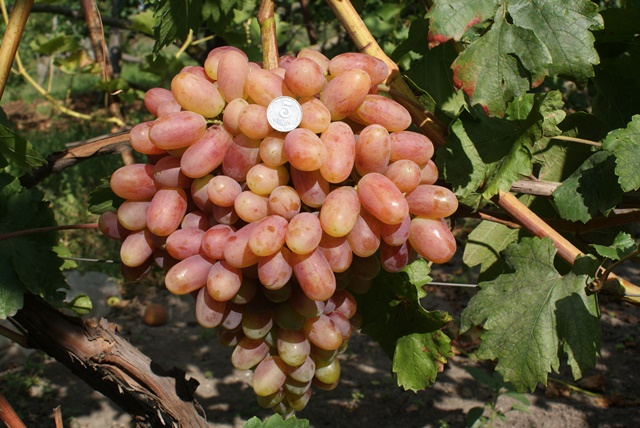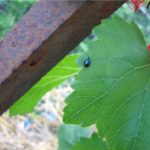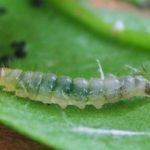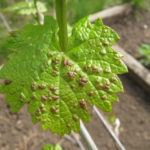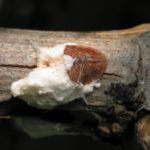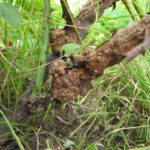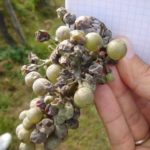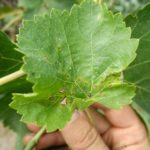It is very difficult among the huge variety of grape varieties to choose the one that will have the qualities that meet all the requirements of winegrowers. Fans of breeders, listening to the needs of winegrowers, create unique varieties. And although they are not included in the State Register, their popularity does not diminish from this. That such can be attributed Transfiguration.
Table of contents
Characteristic variety
Let's start with the description.This species is a hybrid, obtained by the breeder Krainova by crossing two varieties - Talisman and Kishmish radiant. Treats early grades, term of maturing of 115 - 120 days. Self-pollinating, high-yielding, resistant to temperatures as low as -23 degrees.
With one bush you can get 20 kg. fruits. The bush is a vigorous, forms many shoots, gives two harvests a year. The first crop ripens on the main bush in August. Second harvest give stepchildren. Gather it in October. Clusters are quite large. The weight of each brush is from 750 to 1500 grams.
Cylindrical clusters have an average density. Fruits are ovate-oblong, juicy, light pink color, rolling in yellow. A mass of berries 15-20 grams. The taste is sweet with a slight sourness. The skin is not tight. The sugar content is 18-19%.
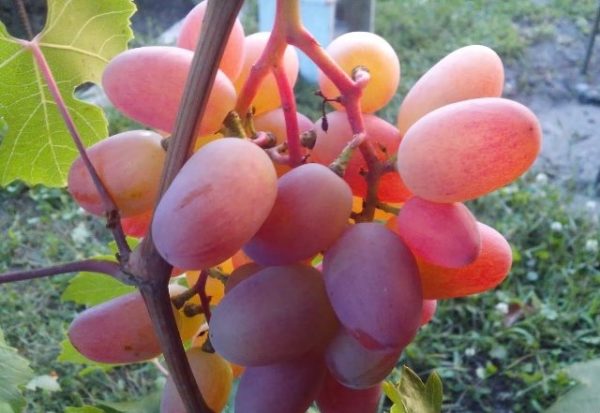
The advantages of the variety
The advantages of the variety are:
- yield is consistently high;
- taste great;
- self-pollinated;
- suitability for making wine;
- good transportability;
- frost resistance;
- high percentage of rooting cuttings.
The disadvantages include:
- low disease resistance;
- the need to harbor for the winter, despite the cold resistance.
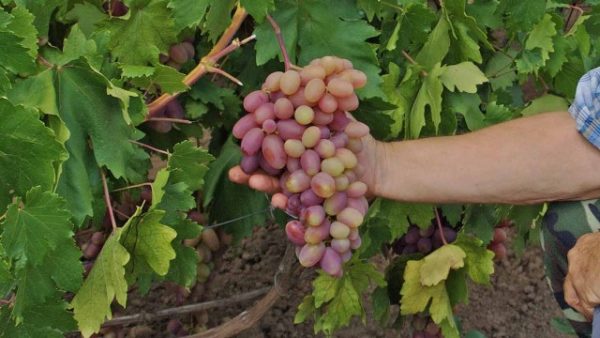
Selection of land for landing
Land for planting transfiguration should be located on a well-lit place, covered from the wind. This may be the south side of the house or another building. The building will protect the bushes from the wind, and in the period of severe frosts will provide additional heat. However, it is necessary to take into account when planting that the root system of grapes is powerful enough, so you do not need to plant grapes near trees, as there will be a struggle for nutrients between them.
This variety does not tolerate a lack of moisture, but there should not be an overabundance in it either, therefore, watering should be moderate. After watering, soil loosening is required. Removal of groundwater at the landing site must be at least 1.5 meters from the ground.
Landing features
The best time for planting transfiguration is spring. However, good growth performance and autumn planting. In the spring, as a rule, planting seedlings. Autumn planting is good for grafting cuttings to the rootstock of other varieties. In this case, it is necessary to take into account the state of the cutting at the time of vaccination.
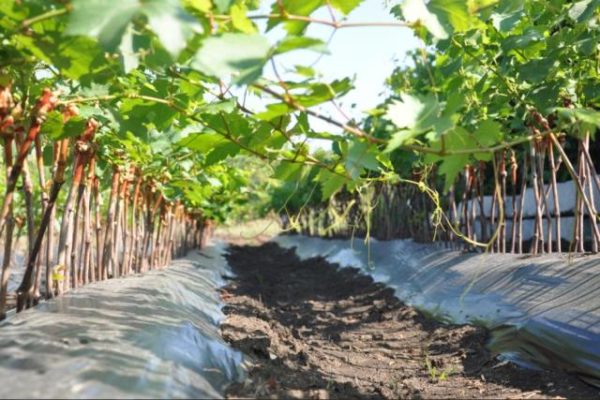
Saplings
For spring planting, you need to choose the right seedlings. When choosing, you should take into account these nuances:
- seedlings must not be frozen and not dried, otherwise they will not take root;
- The cut on the seedling should be green. The change in color of the slice indicates that it is unsuitable for planting;
- The root must be white.
Planting pits dug every 2 meters. The depth of the pit should be twice the size of the roots. At the bottom of the pit pour a layer of expanded clay. It will serve as a drainage. Pour the soil mixed with humus on the drainage layer. From above we pour the usual soil. The pit turns out to be filled up to half. We prepare the seedling the day before planting, soaking it in water and treating with a root growth stimulator.
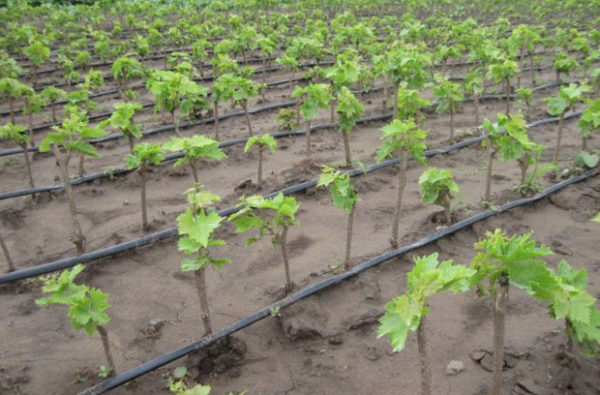
In the pit deepen the seedling to the root of the neck. It should remain on the surface. Before digging, the tips of the roots need to be trimmed slightly.In-ground saplings are sprinkled with earth, carefully trampled down and watered abundantly. Water consumption for each seedling - 3 buckets. Spring planting is carried out at a time when the air temperature is heated to +15 degrees, and the temperature of the soil - to +10 degrees.
Cuttings
Cuttings can be grafted both at rest and in full bloom. The same situation with the stock. Regardless of the status of the stock and cuttings, they need to be prepared in advance. The cuttings must have 3 eyes.
Cut cuttings from the bottom edge, departing from the lower peephole 2-3 millimeters in the form of a wedge. Soak the cuttings in water for 5-6 days before planting and dip them into the root growth stimulator. The upper part of the cutting must be sealed with paraffin. This is necessary in order to retain moisture in the handle, and improve frost resistance. It is necessary to dip the upper part of the cutting in boiling paraffin and cool under running cold water.
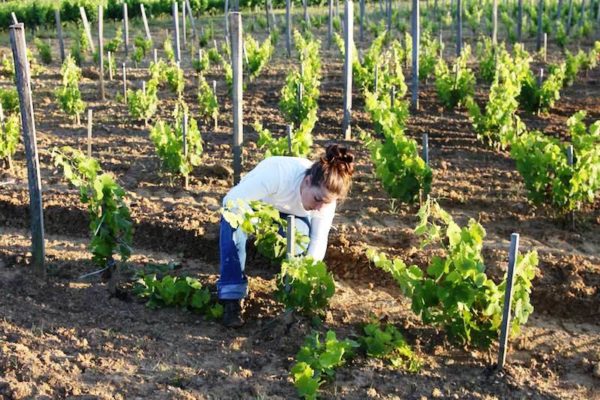
The stock is pruned by removing an old bush from it. The surface of the rootstock must be cleaned to smoothness, remove the debris and carefully split it, so that you can insert a cutting.If the surface of the rootstock allows, then you can graft multiple cuttings. It is good to pull off the stock with a cotton cloth so that the fit of the stock to the cuttings is dense, and the fabric has melted over the year. Place the graft with clay to keep it moist. In the future, the grapes require only care.
Grape care
Subsequent care of the brand is in such events as:
- watering;
- fertilizer;
- mulching;
- trimming;
- prevention of diseases and pests.
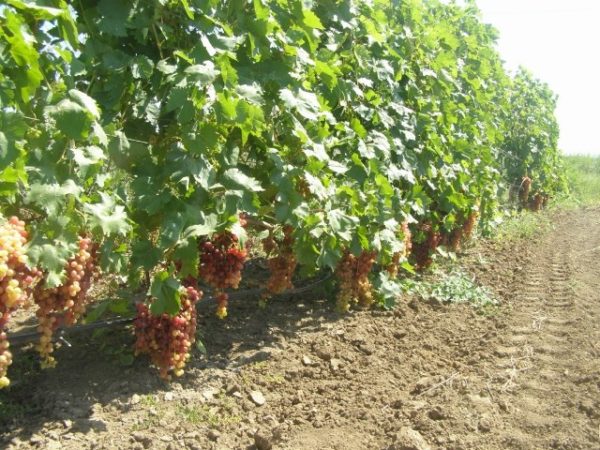
Watering
The peculiarities of irrigation are that there should be enough moisture, since the roots of this variety go deep underground. The main thing is not to overdo it in the issue of watering, since an overabundance of moisture will destroy the plant.
After planting, seedlings are watered 1 time in 7 days. Water consumption for each bush - 2 buckets. After 30 days, watering is done once in 21-28 days. Water consumption for each bush will be 4 buckets.
Autumn water-charging irrigation is carried out after the foliage has fallen. It is carried out in order to fill the soil with moisture. Dry ground freezes more, and the vine in it can freeze. Moisture in the ground should be sufficient to saturate the roots, located deep underground.
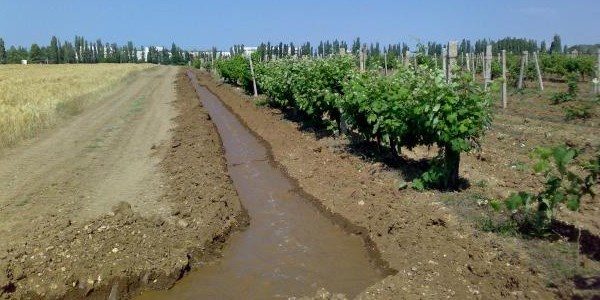
In spring, water-charging irrigation is carried out with the aim of awakening the buds, this is especially necessary in the case of a little snowy winter.
Watering can be both underground and surface. When surface irrigation around the seedling dig a hole to 20 cm and fill it with water. If the weather is rainy, then it is necessary to dig the exhaust grooves for the outflow of water. Do not allow a high level of humidity, as this affects the taste of the fruit. They become watery and tasteless.
Top dressing needs to be brought in the spring, prior to the beginning of the flowering period. Top dressing is performed using potash – phosphate fertilizers.
Mulching
The next stage of care is mulching. This procedure is carried out to retain moisture and prevent the growth of weeds. Layer mulch spread thickness of 4 cm. As mulch, you can use humus or peat.
Shrub formation
Pruning of grapes should be carried out in the autumn or spring before the awakening of the vine. It is carried out with the aim of forming a bush and regulating the harvest. The most successful is considered fan pruning.
The essence of this pruning is to shorten the fruit vines to 6 or 8 eyes, and reduce the number of shoots to 25-26 pieces. On each shoot leave one brush, as this variety belongs to high-yielding varieties and clusters of its large size. This can lead to overloading the vine.
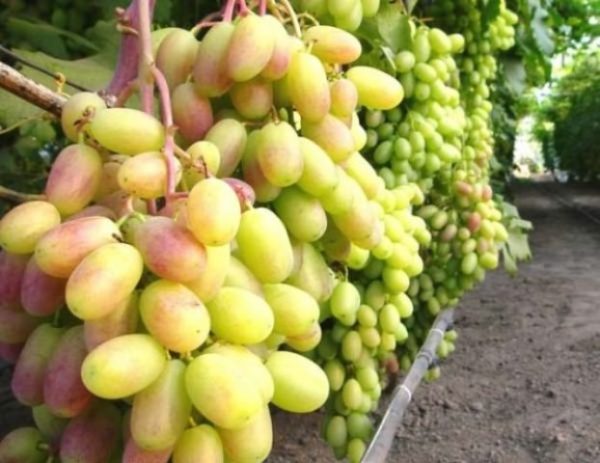
Diseases and pests
Transformation pests include:
- grape flea. She eats leaves. On the underside of the leaf, the larvae lay, and the offspring produced eats the leaves. The shrub must be treated with insecticide, spraying it on the open buds;
- grape cushion eats grape juice. Lives on the shoots of the plant, producing a protective white film, due to which it becomes a little noticeable, and is protected from the effects of insecticides. Methods of struggle - manual collection;
- moth grape lays the larvae on the back of the leaf, and the hatched offspring gnaws the leaves and feeds on the juice. Methods of control - treatment with insecticides, disposal of fallen leaves and loosening the soil;
- grape mite. Fight this pest with insecticides.
- Vine leaf with flea
- Grape Circle Moth
- Grape Leaf Affected by Tick
- Grape crib on the vine
Grapes are subject to the following diseases:
- powdery mildew. Fungal disease, manifested in the form of white plaque covering the leaves. To combat it, fungicides such as Topaz or Vitaros are used;
- bacterial cancer. Infection occurs by treating the vine with a non-sterile instrument. The disease is not treated, the infected vine is cut out;
- spotted necrosis. Appears after wintering. It manifests itself at the beginning of the appearance of spots on the leaves, and then drying and withering away of the vine. Sprayed with preparations containing copper.
- Bacterial cancer on the vine
- Grapes affected by dew
- Spotted necrosis on grape leaves
Follow the recommendations of experienced growers, and the variety Transformation with proper care will delight the high yield of fruits of excellent taste.
